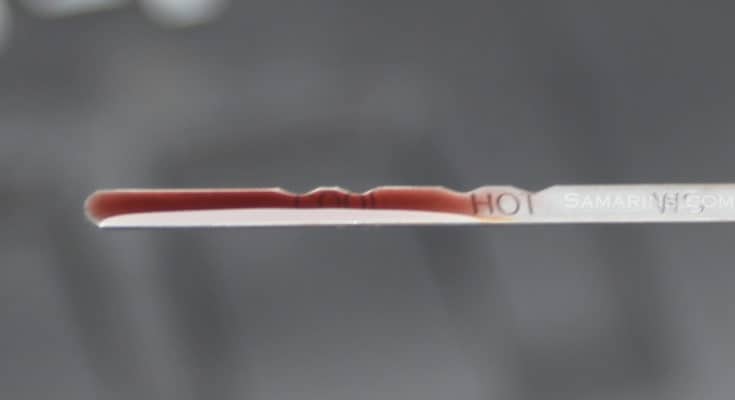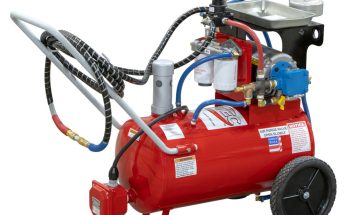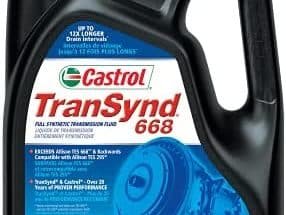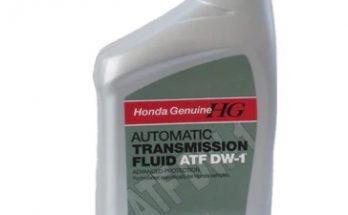Automatic transmission fluid, also known as ATF, is a type of lubricant specifically designed for use in automatic transmissions. It helps to lubricate the transmission and ensure smooth operation of the gears and other moving parts.
The automatic transmission is a complex system that uses a series of gears, hydraulics, and electronic controls to shift gears automatically as the vehicle speeds up or slows down. The transmission fluid is a vital component of this system, providing lubrication and cooling to the moving parts.
ATF is a type of hydraulic fluid that is used to power the transmission’s hydraulic system. This system uses high-pressure fluid to move the gears and control the transmission’s shifting. The fluid also helps to keep the transmission cool by dissipating heat.
ATF is a specialized type of lubricant that is designed to withstand the high temperatures and pressures found in an automatic transmission. It is typically a blend of base oils, additives, and viscosity modifiers, which provide the necessary lubrication and protection for the transmission.
One of the key properties of ATF is its viscosity, or ability to flow. The fluid must be able to flow freely in order to lubricate the transmission’s moving parts, but it must also be thick enough to maintain its lubricating properties at high temperatures. ATF is designed to have a specific viscosity range that allows it to perform well under a variety of operating conditions.
Another important property of ATF is its ability to resist degradation. As the transmission heats up, the fluid is exposed to high temperatures and pressures, which can cause it to break down and lose its effectiveness. Additives in the ATF help to prevent this breakdown, ensuring that the fluid remains effective even after extended use.
The transmission fluid also plays a crucial role in the transmission’s shifting mechanism. As the vehicle speeds up or slows down, the transmission must shift gears to maintain the appropriate level of power. This shifting is controlled by a series of hydraulic valves and clutches, which are activated by the transmission fluid.
When the vehicle is accelerating, the transmission fluid helps to engage the clutches and shift the gears. As the vehicle slows down, the transmission fluid helps to disengage the clutches and return the gears to a neutral position. This allows the transmission to smoothly shift between gears, providing the right amount of power to the wheels at all times.
ATF also helps to prevent wear and tear on the transmission. As the gears and other moving parts rub against each other, they generate heat and friction. Without proper lubrication, this friction can cause the parts to wear out quickly and fail. The ATF provides a layer of lubrication that reduces friction and wear, helping to extend the life of the transmission.
Over time, the transmission fluid can become contaminated with dirt, debris, and other contaminants. These contaminants can cause the transmission fluid to break down, and effectively reduce it’s lifespan.
How Often Should Automatic Transmission Fluid Be Changed?
It is recommended to change the automatic transmission fluid every 30,000 to 60,000 miles or every 2 to 3 years, depending on the manufacturer’s recommendation and driving conditions. It is important to consult the owner’s manual and follow the manufacturer’s recommendations for optimal transmission performance and longevity.
Popular Automatic Transmission Fluid Types
The most common automatic transmission fluid types are:
- Dexron III/Mercon: This type of fluid is commonly used in GM and Ford vehicles and is designed for use in a wide variety of transmission systems.
- Type F: This fluid is commonly used in Ford vehicles and is designed for use in older, non-electronic transmissions.
- Honda ATF-Z1: This fluid is specifically designed for use in Honda vehicles and is compatible with a variety of transmission systems.
- Toyota Type T-IV: This fluid is specifically designed for use in Toyota vehicles and is compatible with a variety of transmission systems.
- Nissan Matic-D: This fluid is specifically designed for use in Nissan vehicles and is compatible with a variety of transmission systems.
- Subaru ATF: This fluid is specifically designed for use in Subaru vehicles and is compatible with a variety of transmission systems.
What Color Is Automatic Transmission Fluid?
Automatic transmission fluid is typically a reddish-pink or reddish-brown color. This is due to the fact that it is made from a combination of base oils and additives, which can give it a reddish tint.
The color of automatic transmission fluid can vary depending on its age and the type of vehicle it is used in. For example, newer transmission fluid may be a brighter or more vibrant red, while older fluid may appear more dull or brownish in color. Additionally, some vehicles may require specific types of transmission fluid, which can affect its color.
In general, however, the color of automatic transmission fluid is a key indicator of its condition and can help mechanics and car owners determine if it needs to be changed. If the fluid appears dark or discolored, it may be contaminated with debris or have other issues that could affect the performance of the vehicle’s transmission. In this case, it is important to have the fluid replaced to prevent any potential problems.
In the transmission fluid chart below, you will see that ATF color changes as it wears out and gets darker with use and overheating.
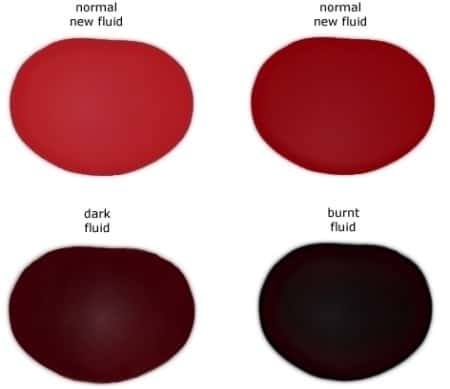
The color of automatic transmission fluid can also change over time due to the natural aging process and the effects of heat and friction on the fluid. As the fluid is used, it can become oxidized and break down, which can cause it to change color and become less effective at lubricating and protecting the transmission. This can lead to issues such as slipping or grinding gears, which can be costly and inconvenient to repair.
In order to maintain the proper color and condition of automatic transmission fluid, it is important to follow the manufacturer’s recommendations for regular fluid changes and maintenance. This can help ensure that the fluid is always in good condition and able to perform its essential functions, such as lubricating moving parts and protecting against wear and tear.
Overall, the color of automatic transmission fluid is a key factor in its effectiveness and the overall performance of a vehicle’s transmission. It is important to monitor the color of the fluid and replace it when necessary to prevent potential issues and keep the vehicle running smoothly.
How Much Does it Cost to Change Automatic Transmission Fluid?
The cost to change the automatic transmission fluid in a vehicle can vary depending on the make and model of the vehicle, as well as the location and the type of transmission fluid used. On average, the cost can range from $100 to $200.

